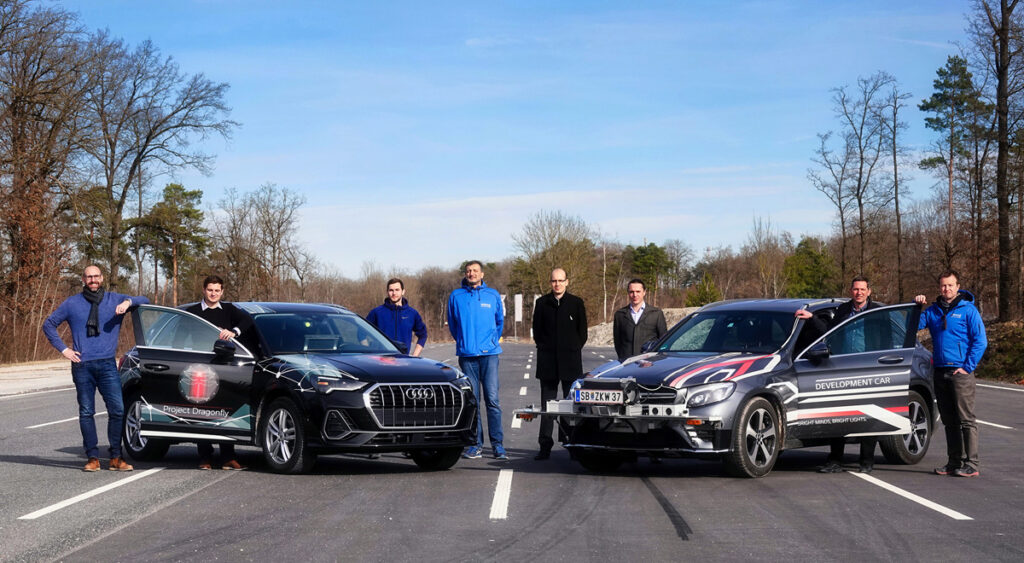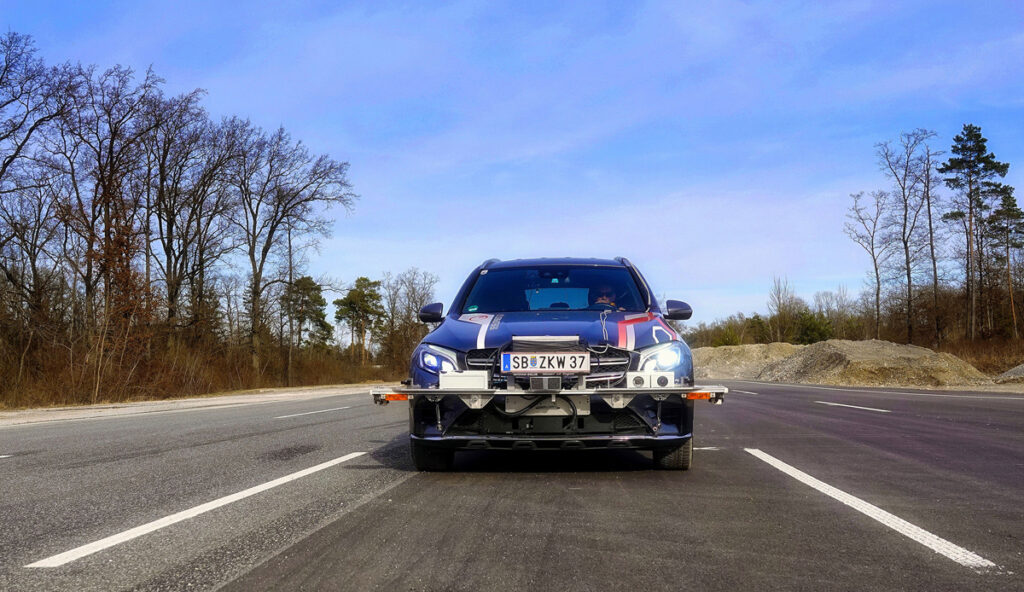SWARCO Road Marking Systems and ZKW Group conducted comprehensive tests on automated driving on the Digitrans proving ground in St. Valentin, Austria. Within the scope of this testing, both companies carefully examined the visibility of markings in varying conditions when using automated detection systems. Test results demonstrate a direct correlation between the marking systems’ quality and their detectability.
24 May 2022 – “Road markings are an integral part of the road infrastructure required for autonomous driving, that much is clear. We also wanted to know, however, if the quality of the marking systems affects automatic detectability,” explains Friedrich Wiesinger, Team Leader Product Development at SWARCO Road Marking Systems. For this purpose, the company recently carried out research together with ZKW Group at the new Digitrans test site in St. Valentin, where a broad range of road markings had been applied last year to perform various tests. ZKW Group is a specialist in innovative premium light systems and electronics. As a system supplier, it ranks among the leading partners of the automotive industry worldwide. In the tests conducted jointly with SWARCO Road Marking Systems, cameras as well as LiDAR were used. “We wanted to explore how well different markings are detected in a variety of situations. For this purpose, testing took place both during the day and at night, in some cases even with simulated oncoming traffic,” explains Thomas Reiter, Group Senior Manager for Autonomous Driving at ZKW Group.
Testing in a Broad Range of Conditions
Besides day and night tests, the focus was also on road marking wear. To include worn markings in the tests, new markings were worn down using special tools. Testing also took different weather conditions into account. “At the test site, half of a pedestrian crossing has structured markings, while on the other half, plain markings are used. This pedestrian crossing was then placed under water during night-time. In such a situation, the section with the structured markings is much more clearly visible to the human eye. And for the sensors, it’s the same,” Wiesinger explains.
Important Findings for Real-Life Situations
The special test involving the two-part pedestrian crossing confirmed what further tests on the proving ground demonstrated, too: the higher the quality of the pavement markings, the better they are detected by autonomous systems. This applies to the detection by cameras as well as LiDAR systems and is based on the properties of high-performance markings. Whereas a permanently high contrast with the surface matters for cameras, for LiDAR, high retroreflection with values above average is particularly essential. Thanks to their structures, high-performance markings remain more clearly visible even in difficult circumstances, such as in wet conditions. In contrast, worn markings have an adverse effect on automatic detectability, as expected. “In summary, we can clearly say that high-performance markings are of paramount importance for automated driving. They are detected more reliably and have a longer service life, thus enhancing road safety. In accordance with these findings, minimum standards for road marking should therefore be high to make the future of automated driving truly safe,” concludes Wiesinger, pointing to the detailed scientific assessments that are currently in the works.
About SWARCO Road Marking Systems
Quality products and services from SWARCO Road Marking Systems guide traffic safely from A to B by day and, above all, by night. Whatever the weather. From a single source. Over 5,000 customers in more than 80 countries place their trust in them.
For further information visit: www.swarco.com/rms



